All objects referred to the subsequent problems lie on the principal axis.
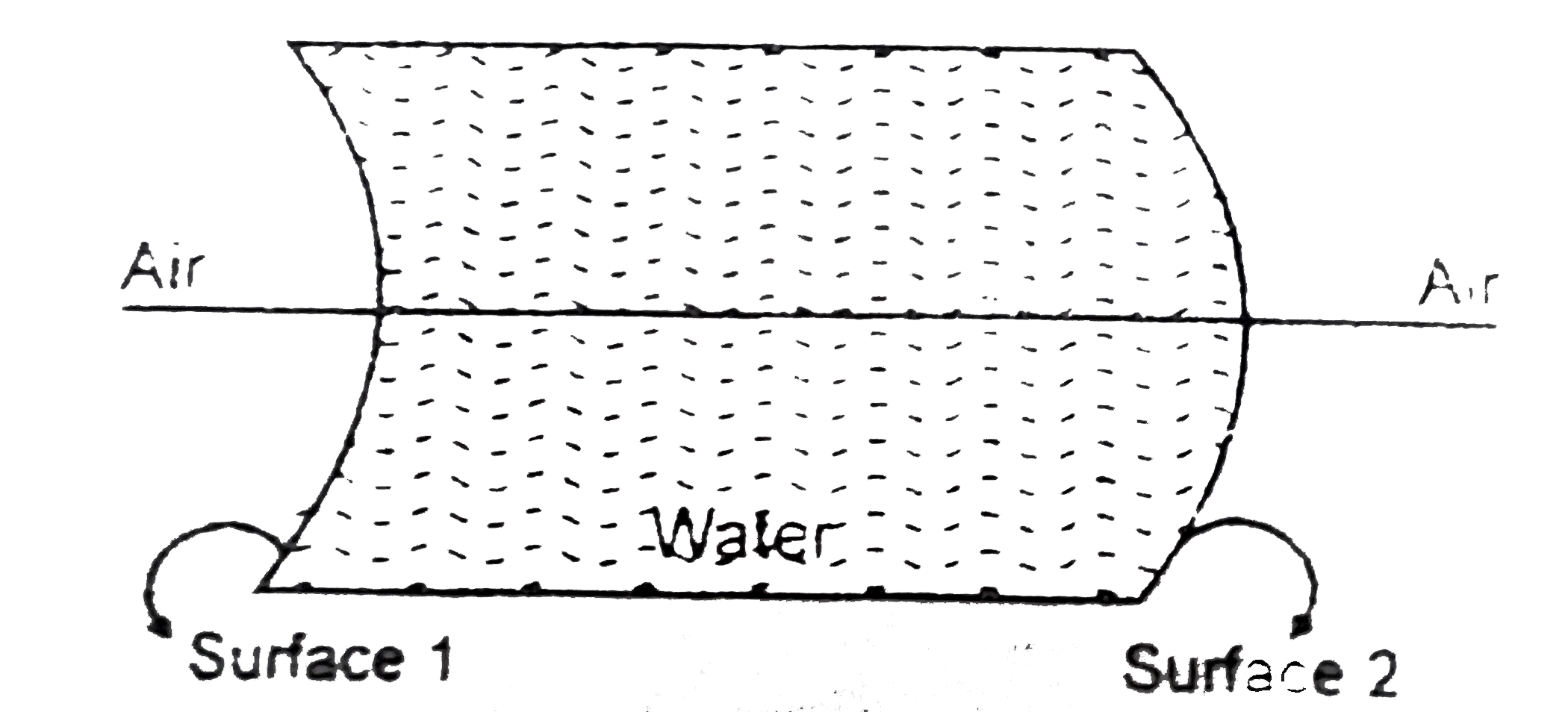
If light is incident on surface 2 from right then which of the following is true for images formed after a single refraction.
Real object will result in a real image
Virtual object will result in a virtual image
Real object will result in a virtual image
Virtual object will result in a Real image
The correct Answer is:D
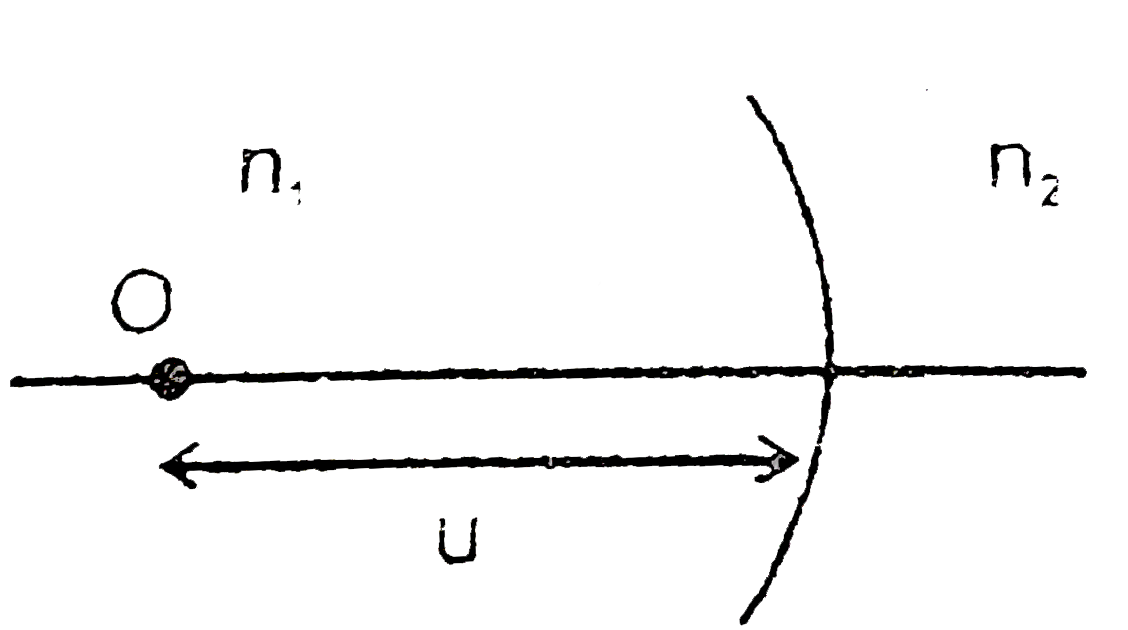
Consider object on left side of spherical surface seperating two media.
If real object is in rarer media i.e. n1<n2
Then n2v=n2−n1(−u)+n1−R=−ve
Hence image shall be virtual for a real object lying
on concave side with rarer media....(1)
If real object is in denser media i.e. n1>n2
n2v=−(n1−n2)(−u)+n1(−R)=n1−n2u−n1R
∴ Image is real if
n1−n2u>n1R or u<(n1−n2)Rn1.....(2)
and image is virtual if u>(n1−n2n1)R...(3)
From statements 1,2 and 3 we can easily conclude the answers.
Topper's Solved these Questions
- DAILY PRACTICE PROBLEMBOOK - RESONANCE ENGLISHCHAPTER - DAILY PRACTICE PROBLEMEXERCISE - DPP No.11
20 Videos
- DAILY PRACTICE PROBLEMBOOK - RESONANCE ENGLISHCHAPTER - DAILY PRACTICE PROBLEMEXERCISE - DPP No.12
9 Videos
- DAILY PRACTICE PROBLEMBOOK - RESONANCE ENGLISHCHAPTER - DAILY PRACTICE PROBLEMEXERCISE - DPP No.9
20 Videos
- CURRENT ELECTRICITYBOOK - RESONANCE ENGLISHCHAPTER - CURRENT ELECTRICITYEXERCISE - High Level Problems (HIP)
19 Videos
- ELECTRO MAGNETIC WAVESBOOK - RESONANCE ENGLISHCHAPTER - ELECTRO MAGNETIC WAVESEXERCISE - Exercise 3
27 Videos
Similar Questions
All objects referred to the subsequent problems lie on the principal axis.
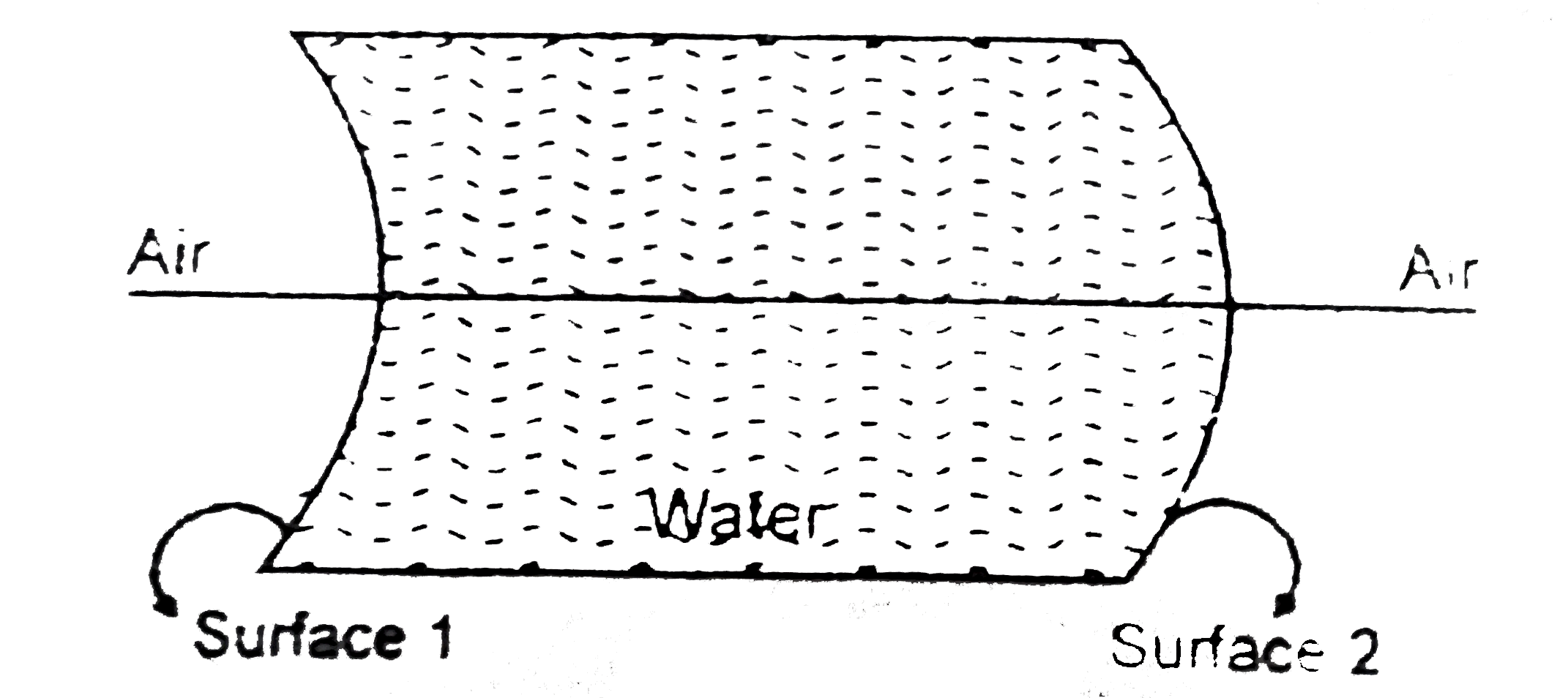
If light is incident on surface 1 from left, the image formed after the first refraction is definitely :
View SolutionAll objects referred to the subsequent problems lie on the principal axis.
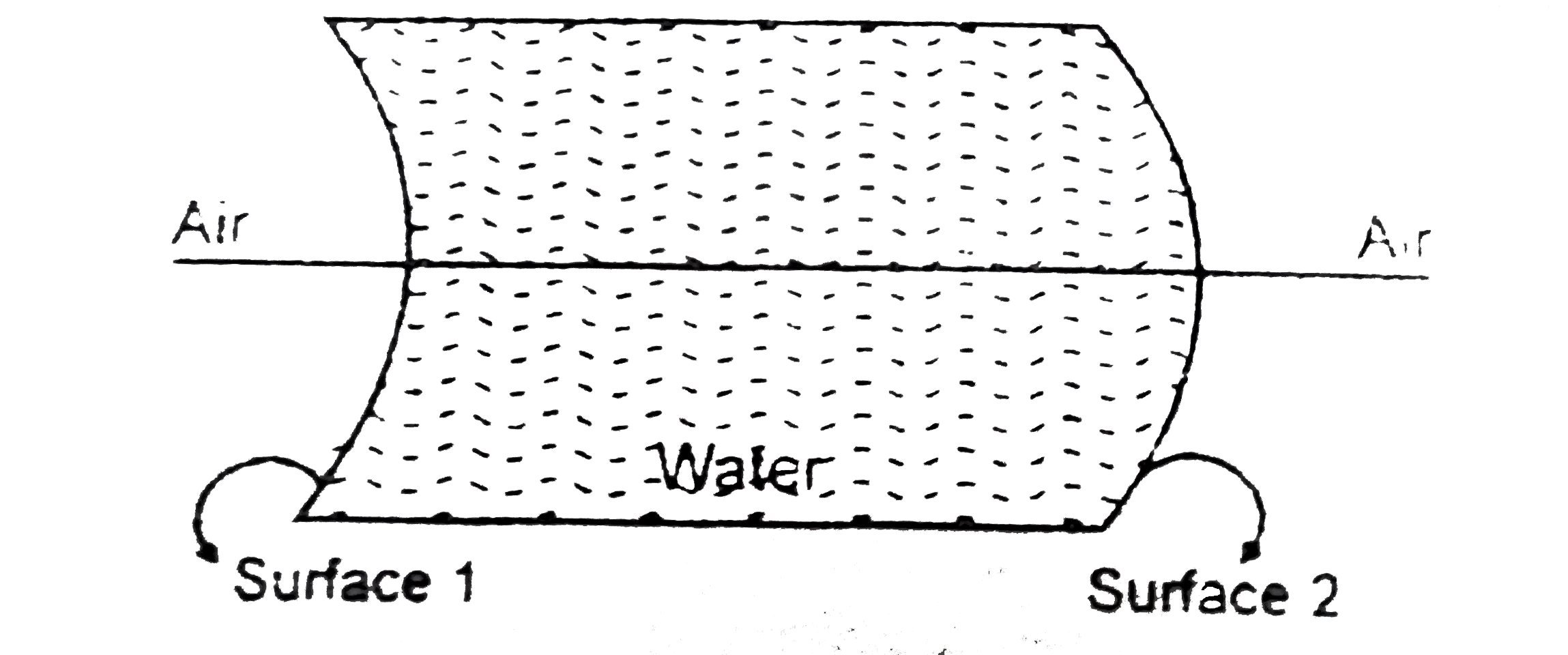
In above question if the object is real, then the final image formed after two refractions :
View Solution
Knowledge Check
Which of the following form(s) a virtual and erect image for all position of the object?
AConcave lensBConcave mirrorCConvex mirrorDBoth (a) and (c )An object is kept on the principal axis of a concave mirror of focal length 10cm, at a distance of 15 cm from its pole. The image formed by the mirror is:
AVirtual and magnifiedBVirtual and diminishedCReal and magnifiedDReal and diminished
In the figure shown , a point object O is placed in air on the principal axis. The radius of curvature of the spherical surfaces is 60cm. I is the final image formed after all reflections and refractions.
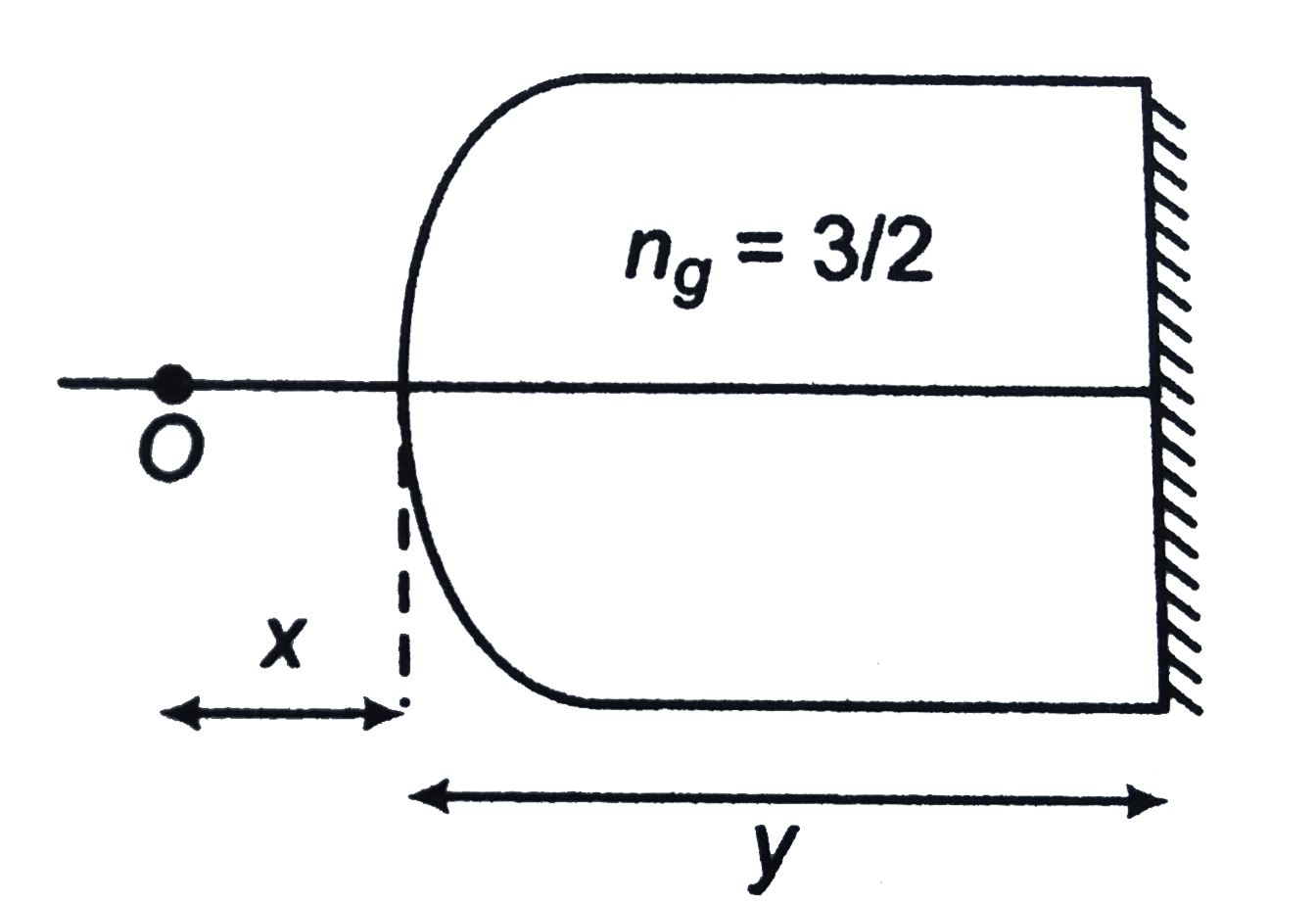
View SolutionAn object is present on the principal axis of a concave mirror at a distance 30cm from it. Focal length of mirror is 20cm.
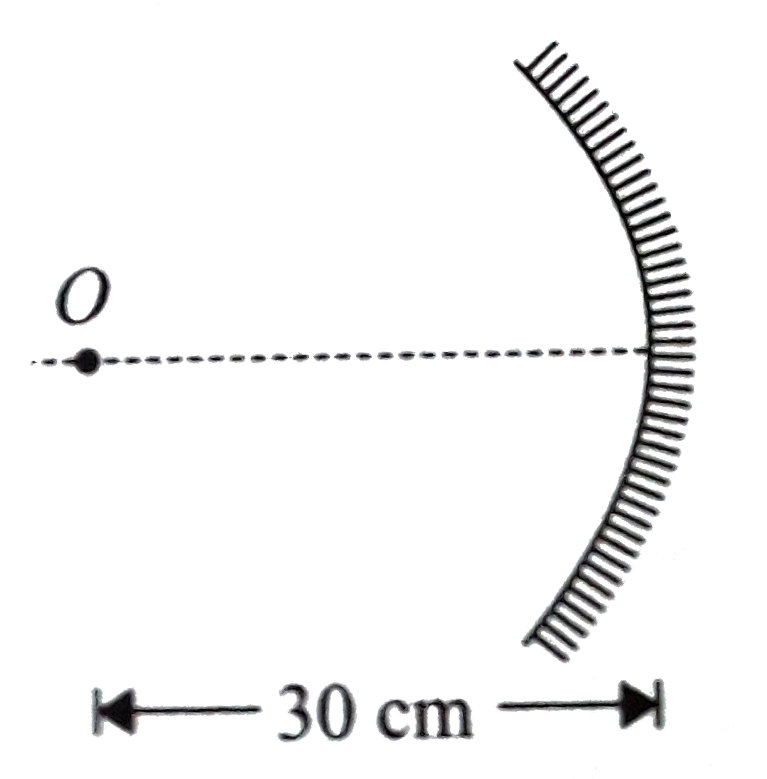
Q. Image formed by mirror is
View SolutionAn object of size 2cm is placed at a distance of 40cm from a glass lens, close to the principal axis of the lens, and the lens forms an image of size 2cm. What is the size of the image and what type of image is formed if the lens and the object, in the same arrangement, is immersed into water ? The refractive index of the lens 1.5, and that of the water is 1.33.
View SolutionAn extended object of size 2cm is placed at a distance of 10cm in air (n=1) form pole, on the other side of refracting surface has refractive index n=2. Find the positon, nature and size of image formed after single refraction through the curved surface.
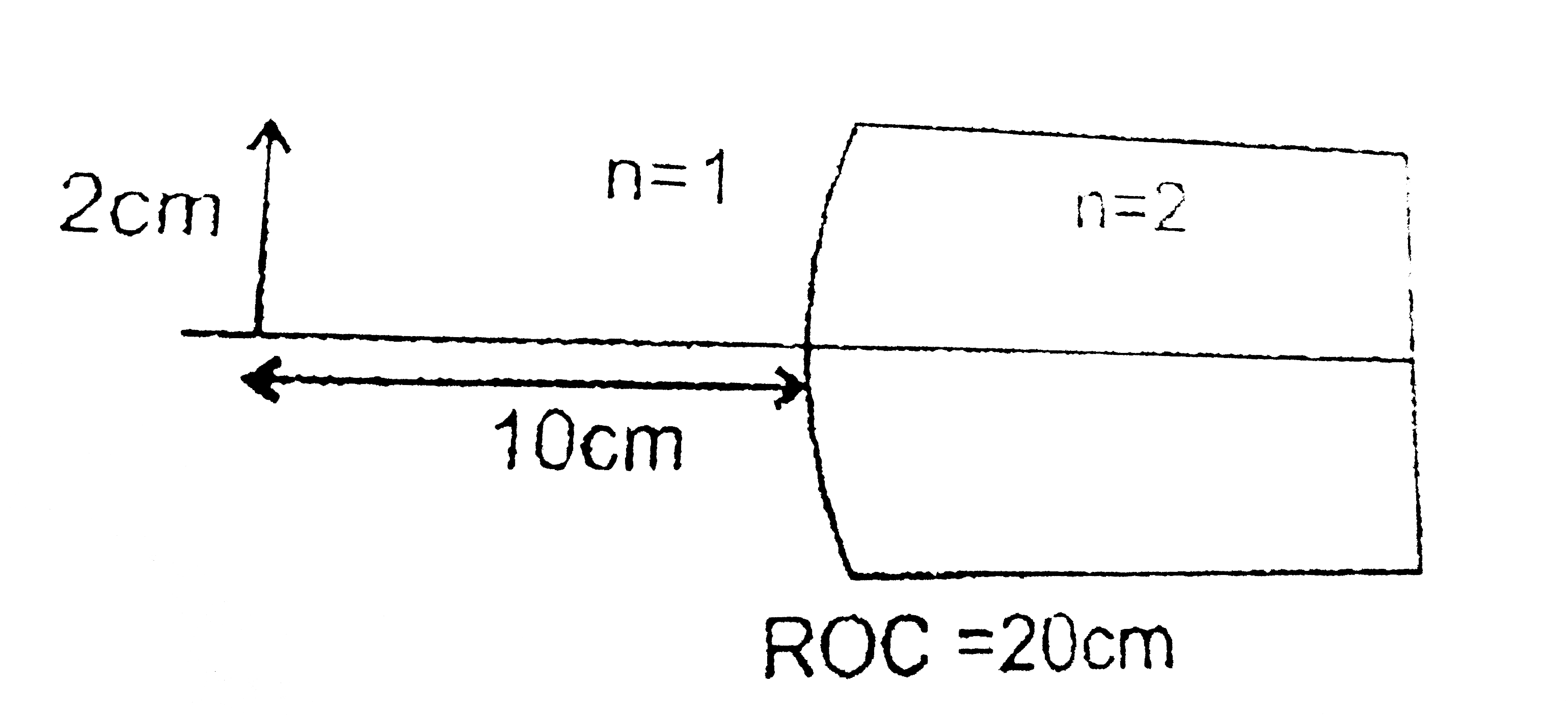
View SolutionA plano-convex lens P and a concavo-convex lens Q are in contact as shown in figure. The refractive index o fthe material of the lens P and Q is 1.8and1.2 respectively. The radius of curvature of the concave surface of the lens Q is double the radius of curvature of the convex surface. The convex surface of Q is silvered.

An object is placed on the placed on the principal axis at a distance 10cm form the plane surface. The image is formed at a distance 40cm from the plane surfaces on the same side. The focal length of the system is
View SolutionAn object is placed on the principal axis of a concave mirror at a distance of 1.5 f(f is the focal length). The image will be at,
View Solution
